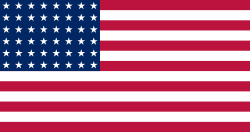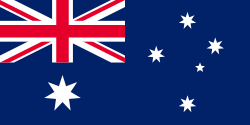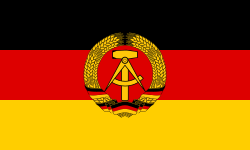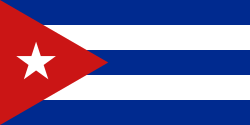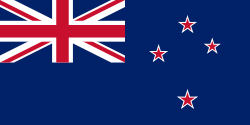Derek Drouin
| Derek Drouin | |||||||||||||||||||||||||||||||||||||
| Nation | |||||||||||||||||||||||||||||||||||||
| Geburtstag | 6. März 1990 (34 Jahre) | ||||||||||||||||||||||||||||||||||||
| Geburtsort | Sarnia, Kanada | ||||||||||||||||||||||||||||||||||||
| Größe | 194 cm | ||||||||||||||||||||||||||||||||||||
| Karriere | |||||||||||||||||||||||||||||||||||||
|---|---|---|---|---|---|---|---|---|---|---|---|---|---|---|---|---|---|---|---|---|---|---|---|---|---|---|---|---|---|---|---|---|---|---|---|---|---|
| Disziplin | Hochsprung | ||||||||||||||||||||||||||||||||||||
| Bestleistung | 2,40 m 2,35 m | ||||||||||||||||||||||||||||||||||||
| Status | aktiv | ||||||||||||||||||||||||||||||||||||
| Medaillenspiegel | |||||||||||||||||||||||||||||||||||||
| |||||||||||||||||||||||||||||||||||||
| |||||||||||||||||||||||||||||||||||||
Derek Drouin (* 6. März 1990 in Sarnia, Ontario) ist ein kanadischer Hochspringer und Olympiasieger.
2010 wurde er nationaler Meister und als Student der Indiana University NCAA-Meister im Freien und in der Halle. Im Jahr darauf verteidigte er seinen NCAA-Hallentitel. 2012 qualifizierte er sich als kanadischer Meister für die Olympischen Spiele in London, bei denen er auf 2,29 m kam und gemeinsam mit Robert Grabarz und Mutaz Essa Barshim die Bronzemedaille gewann.
In seinem letzten Jahr als Student gelang es ihm 2013, mit dem Hallen- und dem Freilufttitel zum NCAA-Rekordmeister im Hochsprung zu werden. Beim Prefontaine Classic stellte er mit 2,36 m einen nationalen Rekord auf, und bei den Weltmeisterschaften in Moskau steigerte er sich weiter auf 2,38 m, was ihm erneut eine Bronzemedaille einbrachte.
Am 25. April 2014 verbesserte Drouin den kanadischen Rekord auf 2,40 m, was auch eine Einstellung des nordamerikanischen Rekordes bedeutete.[1] Am 30. August 2015 gewann er bei den Weltmeisterschaften in Peking mit 2,34 m im Stechen gegen Bohdan Bondarenko und Zhang Guowei den Titel. Auch bei den Olympischen Spielen 2016 in Rio de Janeiro gewann er mit einer Höhe von 2,38 m die Goldmedaille. Drouin ist damit der zweite Olympiasieger in dieser Disziplin für Kanada nach Duncan McNaughton (1932).
Das Internationale Olympische Komitee gab im Januar 2019 die Disqualifikation von Iwan Uchow, dem Olympiasieger von 2012, bekannt. Nachdem der Internationale Sportgerichtshof im April 2021 das Urteil bestätigt hatte, rückte Drouin um einen Platz vor und erhielt – zusammen mit Barshim und Grabarz – die Silbermedaille zugesprochen.[2]
Persönliche Bestleistungen
- Hochsprung: 2,40 m, 25. April 2014, Des Moines (kanadischer Rekord)
- Halle: 2,35 m, 9. März 2013, Fayetteville (kanadischer Rekord)
Weblinks
- Derek Drouin in der Datenbank von World Athletics (englisch)
- Athletenporträt bei Athletics Canada
Einzelnachweise
- ↑ leichtathletik.de: Derek Drouin fliegt über 2,40 Meter. 26. April 2014
- ↑ Marleah Campbell: Former K-State high jumper’s 2012 Olympic silver medal upgraded to gold. WIBW.com, 7. April 2021, abgerufen am 17. August 2021 (englisch).
| Personendaten | |
|---|---|
| NAME | Drouin, Derek |
| KURZBESCHREIBUNG | kanadischer Hochspringer |
| GEBURTSDATUM | 6. März 1990 |
| GEBURTSORT | Sarnia |
Auf dieser Seite verwendete Medien
Pictograms of Olympic sports – . This is an unofficial sample picture. Images of official Olympic pictograms for 1948 Summer Olympics and all Summer Olympics since 1964 can be found in corresponding Official Reports.
Flag of Canada introduced in 1965, using Pantone colours. This design replaced the Canadian Red Ensign design.
Sport records icon to be used for national records.
Autor/Urheber: B1mbo, Lizenz: CC BY-SA 2.5
Zeichnung einer Goldmedaille, basierend auf Olympic rings.svg.
Autor/Urheber: B1mbo, Lizenz: CC BY-SA 2.5
Zeichnung einer Silbermedaille, basierend auf Olympic rings.svg.
Autor/Urheber: B1mbo, Lizenz: CC BY-SA 2.5
Zeichnung einer Bronzemedaille, basierend auf Olympic rings.svg.
Olympic Rings without "rims" (gaps between the rings), As used, eg. in the logos of the 2008 and 2016 Olympics. The colour scheme applied here was specified in 2023 guidelines.
Icon logo of World Athletics
Autor/Urheber: B1mbo, Lizenz: CC BY-SA 3.0
Flag of the Pan American Sports Organization (PASO)
US Flag with 44 stars. In use 4 July 1891–3 July 1896. Created by jacobolus using Adobe Illustrator, and released into the public domain.
US Flag with 44 stars. In use 4 July 1891–3 July 1896. Created by jacobolus using Adobe Illustrator, and released into the public domain.
US Flag with 45 stars. In use 4 July 1896–3 July 1908. Created by jacobolus using Adobe Illustrator, and released into the public domain. This flag was used during the Spanish-American War.
US Flag with 45 stars. In use 4 July 1896–3 July 1908. Created by jacobolus using Adobe Illustrator, and released into the public domain. This flag was used during the Spanish-American War.
US Flag with 46 stars. In use 4 July 1908–3 July 1912. Created by jacobolus using Adobe Illustrator, and released into the public domain.
Other version: Image:US 46 Star Flag.svgUS Flag with 46 stars. In use 4 July 1908–3 July 1912. Created by jacobolus using Adobe Illustrator, and released into the public domain.
Other version: Image:US 46 Star Flag.svgUS Flag with 48 stars. In use for 47 years from July 4, 1912, to July 3, 1959.
The Canadian Red Ensign used between 1921 and 1957.
This image has compared for accuracy (mainly colors) using an image from World Statesmen. The only change is making the maple leaves green from red. This image has compared for accuracy (mainly colors) using an image from World Statesmen. The most recent version of this image has changed the harp into one with a female figure; see [http://flagspot.net/flags/ca-1921.html FOTW
The Canadian Red Ensign used between 1921 and 1957.
This image has compared for accuracy (mainly colors) using an image from World Statesmen. The only change is making the maple leaves green from red. This image has compared for accuracy (mainly colors) using an image from World Statesmen. The most recent version of this image has changed the harp into one with a female figure; see [http://flagspot.net/flags/ca-1921.html FOTW
Flag of Australia, when congruence with this colour chart is required (i.e. when a "less bright" version is needed).
See Flag of Australia.svg for main file information.(c) I, Cmapm, CC BY-SA 3.0
The flag of the Soviet Union (1955-1991) using a darker shade of red.
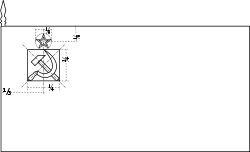
(c) I, Cmapm, CC BY-SA 3.0
The flag of the Soviet Union (1955-1991) using a darker shade of red.

Flag of Second Polish Republic and later People's Republic of Poland in period from March 29, 1928 to March 10, 1980. Red shade used here is HTML "vermilion" #E34234. Proportion 5:8.
Flag of Second Polish Republic and later People's Republic of Poland in period from March 29, 1928 to March 10, 1980. Red shade used here is HTML "vermilion" #E34234. Proportion 5:8.
Die Staatsflagge der Deutschen Demokratischen Republik, vom 1. Oktober 1959 bis 3. Oktober 1990
Autor/Urheber: Sannita, Lizenz: CC BY-SA 3.0
Logo of Jeux de la Francophonie.
Logo von: Commonwealth Sport – Organisation
Autor/Urheber: Erik van Leeuwen, attribution: Erik van Leeuwen (bron: Wikipedia)., Lizenz: GFDL
Derek Drouin during 2013 World Championships in Athletics in Moscow.














